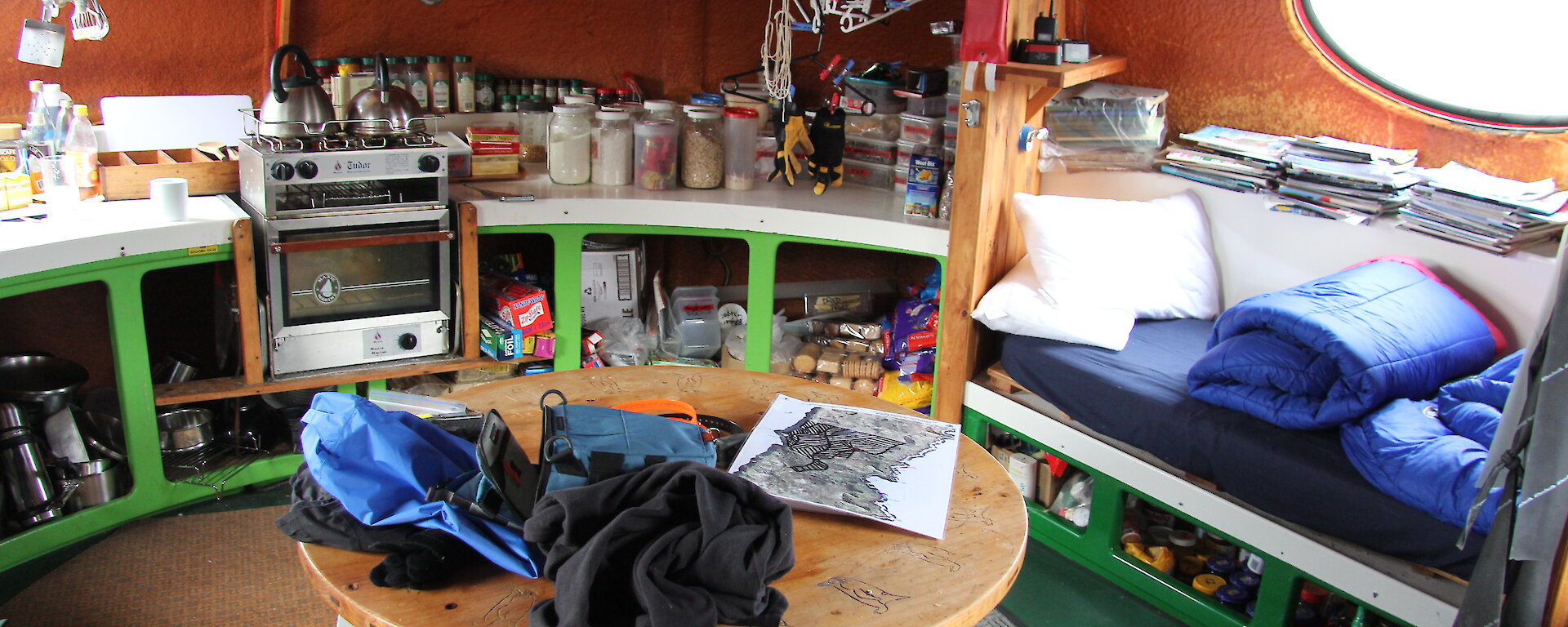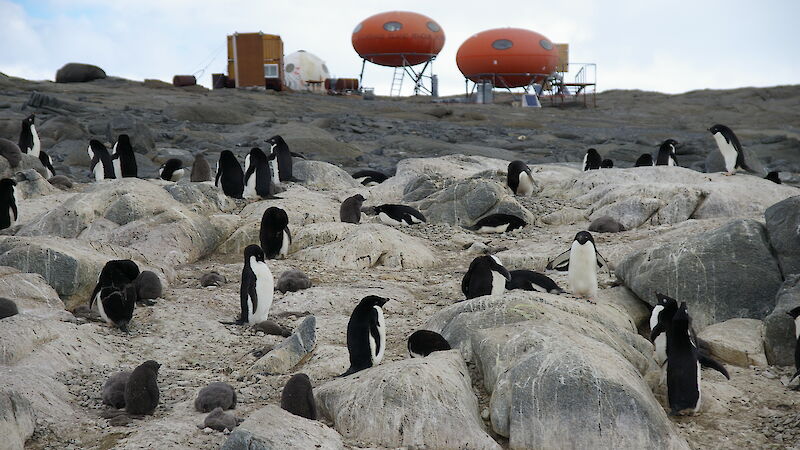The Googie hut, designed and built by Australian Antarctic Division engineer Attila Vrana* in the mid-1980s, has provided a robust and versatile field hut in the Australian Antarctic Territory for almost 30 years.
The elliptical ‘googie’ was given its name from the Australian slang for egg. Shaped not unlike a UFO, it was designed to prevent snowdrift build up and withstand high winds. The Googies were usually painted ‘international orange’, a vivid colour chosen for high-visibility in whiteout conditions.
Designed to prevent snowdrift build up and withstand high winds, the Googies were made from moulded fibreglass cast in two halves and mounted on a steel frame cradle, supported by three anchored legs. Light-weight and portable, at 600 kg without fitout, they were transported via ship and sling-loaded by helicopter to a field-work location.
With an integrated fibreglass shell spanning five metres in diameter at bench height, the three-person hut maximised usable interior space with storage in its under-floor cabinets for food and other items. Under-floor heating and heat exchangers were installed around the walls, with a standard fit-out that included up to three couches doubling as a beds, a work bench, showers and toilet. The prefabricated huts could be configured to serve as accommodation, laboratory, mess area or medical surgery. A metal stairway provided access. Large windows provided a light-filled experience, but often made sleeping difficult in summer.
The Googies were more spacious than other huts designed at the time, and their insulation and weather-proofing provided comparatively better protection than predecessors from extreme Antarctic elements.
Only five prototype Googies were made. They were deployed in February 1992 — the first at Béchervaise Island near Mawson station to support the Adélie penguin monitoring program, and the other four huts at Spit Bay, on Heard Island. Overwintering on Heard Island in 1992, Mr Vrana experimented with using a wind turbine to power the huts – the first Australian foray into using renewable energy. The wind turbine successfully provided most of the field camp’s power needs on a regular basis.
In February 1993 the four huts at Heard Island were dismantled and subsequently distributed to other locations. One was sited at Hop Island in the Rauer Group near Davis station to support seabird research, while another was sent to Béchervaise Island to expand the field camp, by providing a companion hut to the original Googie. The third Googie was sent to Waterfall Bay at Macquarie Island to replace an ageing hut at Lusitania Bay. The last Googie was re-sited at Brothers Point on Macquarie Island in 1996, to replace the hut at Sandy Bay.
The Australian Antarctic Division’s Macquarie Island Modernisation Project team are currently undertaking an assessment of existing field huts to determine whether each meets the structural, functional and environmental criteria for future needs (Australian Antarctic Magazine 36: 2–3, 2019). As part of a broader modernisation plan for Macquarie Island’s infrastructure, the assessment will recommend which huts should be refurbished or replaced, and where new huts might be sited.
Despite some issues in the field, the Googies remain a sentimental favourite for many expeditioners. Though the Googie designs and moulds haven’t survived, their iconic look has inspired inquiries from enthusiasts all over the world, cementing its unique place in Antarctic architectural history.
Special thanks to Attila Vrana for his assistance in writing this article.
*Construction of the Googies was also assisted by other manufacturers including Malcolm Wallhead and Associates (now Icewall One) – the makers of Igloo Satellite Cabins or ‘Apple huts’ – see Australian Antarctic Magazine 14: 30-31, 2008.



